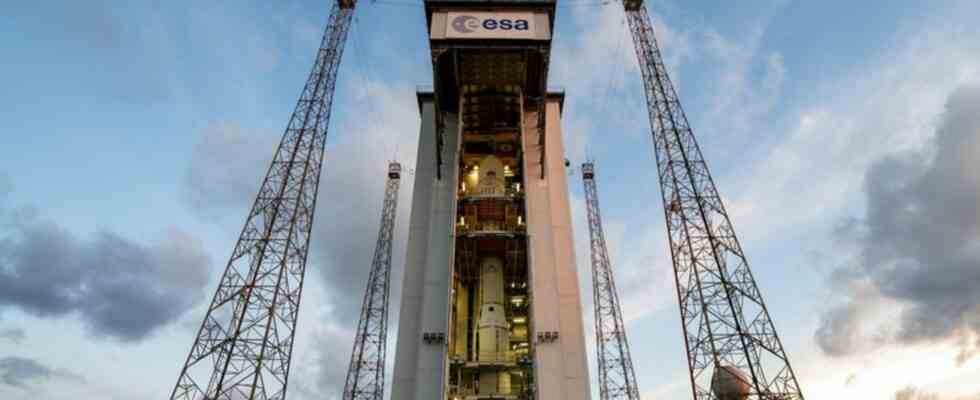space travel
Trouble with launchers: Europe’s space in crisis?
The Vega C is a further development of the Vega, which has been in use since 2012 and brings light satellites into space. photo
© M. Pedoussaut/ESA/dpa
The European launch vehicle Ariane 6 will not fly until the end of the year after a long delay. The smaller Vega C broke down on its first commercial flight. What does that mean for European access to space?
The new European carrier rocket Ariane 6 is not scheduled to start until the end of the year, the first commercial flight of the smaller Vega C recently went wrong. Things are not looking good for the European launchers at the moment. But what does that mean for European space travel? Is Europe in danger of falling further?
“We are in a serious crisis in the European launch vehicle sector,” said the European space agency Esa at the request of the German Press Agency. This began almost a year ago when Russia decided to withdraw its Soyuz rockets from the European spaceport in Kourou in French Guiana. This was followed by delays in Ariane 6, which is now scheduled to launch in the last quarter of the year – three years later than originally planned. At the end of December, the failed first commercial flight of the Vega C joined the list of problems.
A commission of experts is to find out exactly what went wrong during the flight, when the rocket veered off course just a few minutes after launch. Rocket operator Arianespace had spoken of a problem with the Zefiro 40 engine and a drop in pressure. The first results of the commission should be available in February.
“Access to space is not at stake”
According to Arianespace, three to four Vega-C rockets should actually be launched this year. These launches will be managed depending on the result of the investigative commission: Depending on the mass of the satellites, it is at least theoretically possible to launch the missiles into space with the predecessor of the Vega C, the Vega.
Vega C and Ariane 6 are intended to make Europe’s space flight more competitive and are therefore extremely important. Ariane 6 is the successor to Ariane 5, which has been in service since 1996. The Vega C is a further development of the Vega rocket, which has been launching light satellites into space since 2012.
Despite the problems, Esa is certain: “Access to space is not at stake.” As soon as Ariane 6 and Vega C fly, they are perfectly tailored to the needs of the European institutions. “The near-term priority is to quickly and reliably secure Ariane 6’s maiden flight and Vega C’s safe, speedy and robust return to flight.”
This is also necessary for Esa because the earth observation satellite “Sentinel-1C”, which is to deliver images of the earth’s surface day and night with radar technology, is to be launched into space on board a Vega C in May or June. Other missions are still planned with Ariane 5.
The “Euclid” probe, on the other hand, which was originally intended to fly into space on a Soyuz rocket and is intended to create a 3D map of the universe, will take off this summer on a Falcon 9 from the US space company SpaceX. With the Russian Soyuz, satellites for the Galileo satellite navigation system should have gone into space. According to Esa, while the Ariane 6 is the preferred launch vehicle, non-European rockets would also be considered for the sake of continuity.

